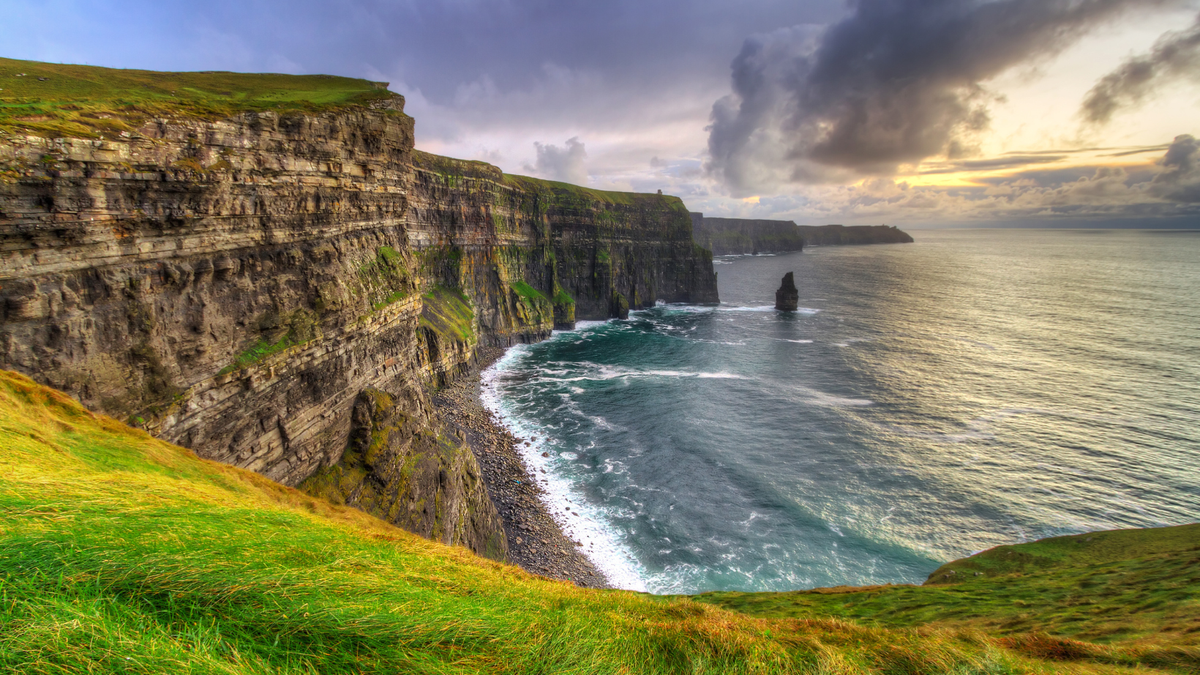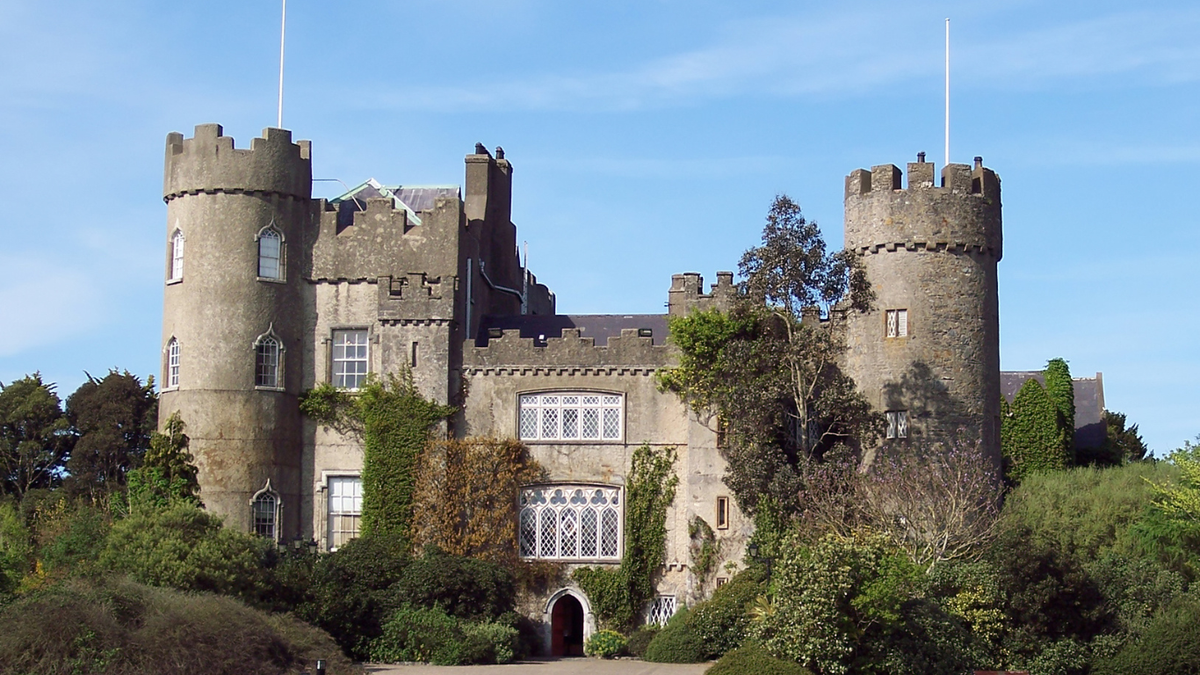Ireland Travel Guide: What to Know Before You Go
This Ireland travel guide will teach you everything you need to know to help you plan your visit to have an epic vacation in the Irish nation.

This Ireland travel guide will walk you through all the essentials to help plan your visit—what to expect, best time to visit, how to get around, the cost, and the best places to explore across the Emerald Isle.
What to Expect
Language:
The primary language spoken in Ireland is English. Irish (Gaeilge) is also an official language, and you’ll see it on road signs, but it's rarely spoken conversationally outside of Gaeltacht regions.
Currency:
Ireland uses the Euro (EUR).
Using Your Credit/Debit Cards:
Tap-to-pay is widely accepted throughout the country, especially in cities like Dublin, Galway, and Cork. ATMs are easy to find, and most shops and restaurants take credit and debit cards. However, it's smart to carry some cash in rural areas or for small purchases like buses and cafés.
Electric Outlets:
Ireland uses Type G plugs (the same as the UK), with a standard voltage of 230 V and a frequency of 50 Hz. Be sure to bring a universal adapter with surge protection. Use a voltage converter if you're bringing high-powered devices like hairdryers.
Best Time to Visit & Ireland's Weather
Ireland has a temperate maritime climate, which means mild temperatures year-round but frequent rain. The best time to visit Ireland is between May and September, when the days are longer, the landscapes are at their greenest, and many festivals are in full swing. However, Ireland’s weather can be unpredictable, so pack layers and a rain jacket no matter the season.
- Spring (March–May): Mild weather, blooming landscapes, and fewer crowds. Great for hiking and countryside exploration.
- Summer (June–August): Warmest and sunniest time to visit. Expect crowds at major attractions, especially along the Wild Atlantic Way.
- Autumn (September–November): Less crowded than summer, still mild, with beautiful autumn colors.
- Winter (December–February): Cold and wet. Some rural areas and attractions close, but Christmas markets and lower prices attract some visitors.
Highlights:
- Longest daylight in June (up to 17 hours).
- Rain is common year-round—don't skip waterproof gear.
- Late spring and early fall offer the best balance of weather and crowds.
Learn More: Monthly Breakdown Of Dublin's Weather
Seasonal Cost for Ireland
Ireland follows a typical European travel season structure:
- Peak Season (June–August): Highest prices for accommodation, rental cars, and tours. This is when Ireland is at its most active, but also the most expensive.
- Shoulder Season (April–May, September–October): A great time to visit. Lower costs, fewer tourists, and most attractions still open.
- Off-Season (November–March): Lowest prices. Some attractions and accommodations close, especially in rural areas. Good for city visits and budget travelers.
Getting Around Ireland – Transportation
Ireland is easy to navigate whether you're renting a car or relying on public transport.
- Car Rental: Best for exploring rural areas and scenic routes like the Wild Atlantic Way. Remember, driving is on the left.
- Trains: Irish Rail connects major cities like Dublin, Galway, Cork, and Limerick. Scenic and comfortable, though not comprehensive for rural travel.
- Buses: Bus Éireann and private operators like Citylink and GoBus offer extensive service between cities and towns.
- DART & Luas in Dublin: Efficient public transport options within Dublin.
- Taxis & Rideshares: Available but more expensive; rideshare options are limited outside cities.
Dublin How To Get Around In Dublin Ireland!
Ireland's Popular Tourist Destinations
- Dublin, the vibrant capital full of history, pubs, and museums
- Galway, a lively harbor city known for music and arts
- Cork, a foodie-friendly city with strong local character
- Killarney National Park, famous for its lakes and castles
- Ring of Kerry, a scenic driving route with coastal views and villages
- Cliffs of Moher, iconic cliffs overlooking the Atlantic
- The Aran Islands, a traditional Irish-speaking island group
- Belfast, Northern Ireland’s capital, rich in Titanic and political history
- Dingle Peninsula, rugged coastline with charming fishing towns
- Connemara, known for wild landscapes and traditional culture
Lesser-Known Destinations To Visit
- Westport, a charming town with mountain views and music-filled pubs
- Cobh, a colorful seaside town and Titanic’s last port of call
- The Beara Peninsula, a less touristy alternative to the Ring of Kerry
- Carlingford, a medieval town with adventure sports and mountain views
- Glenveagh National Park, remote and breathtaking with fewer crowds
Most Popular Things To Do In Ireland
- Tour the Guinness Storehouse in Dublin
- Visit Newgrange, older than the pyramids and rich in myth
- Explore Kilmainham Gaol, a historic prison-turned-museum
- Take a literary walking tour in Dublin
- Hike Croagh Patrick, Ireland’s holiest mountain
- See the Rock of Cashel, a dramatic castle complex
- Take a whiskey distillery tour in Bushmills or Midleton
- Walk the Giant’s Causeway (Northern Ireland, but accessible)
- Explore Skellig Michael, the remote monastery from Star Wars
- Wander through Glendalough, an ancient monastic site in the Wicklow Mountains
Popular Ireland Travel Itineraries
An average stay in Ireland is about 7–10 days. Here are some suggested itineraries:
3–4 Days: Quick City & Culture
- Base in Dublin
- Visit Trinity College, Guinness Storehouse, Kilmainham Gaol
- Day trip to the Wicklow Mountains or Cliffs of Moher
5–7 Days: Cultural & Coastal Combo
- Dublin → Galway → Cliffs of Moher → Doolin → Killarney
- Mix city life, music, and countryside
10 Days: Full Irish Experience
- Dublin → Kilkenny → Cork → Ring of Kerry → Dingle → Galway → Aran Islands
- Combines cities, coast, nature, and historical sites
14 Days: Ultimate Road Trip
- Drive the full Wild Atlantic Way route
- From Cork in the south to Donegal in the north
- Includes remote beaches, national parks, and endless photo stops
2-Day Dublin Itinerary For Backpackers and Layovers.
Cost To Visit Ireland
Ireland is moderately expensive compared to other European destinations. Cities like Dublin and Galway can be pricey, while rural towns offer better value.
- Most Expensive: Dublin, Killarney, Galway
- More Affordable: Doolin, Westport, Carlingford, parts of Donegal
Average Daily Travel Budget (Mid-range):
€130–€180 per person/day (includes accommodation, meals, transport, and entrance fees)
- Budget Travelers: €70–€100/day (hostels, public transport, budget eats)
- Luxury Travelers: €250–€500+/day (4–5 star hotels, private tours, fine dining)
Frequently Asked Questions
Is December a Good Time to Visit Ireland?
It can be a cozy time to visit cities like Dublin and Galway, with festive Christmas markets and fewer tourists. However, rural attractions may be closed, and weather is cold and wet with short days.
Is Ireland Safe for Solo Female Travelers?
Yes, Ireland is considered very safe for solo travelers, including women. Use normal travel precautions, especially at night or in remote areas, but you'll generally find locals friendly and helpful.
Not A Member? ✈️
Save 40%-95% On Flights With Jetsetter Alerts Airline Mistake Fare & Flash Sales Alerts!
Discover Everything You Need To Know About Dublin








